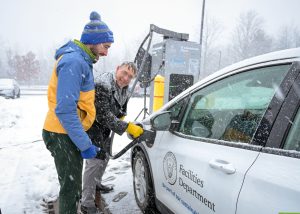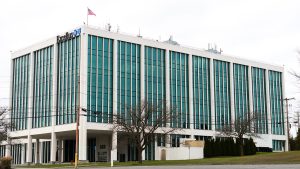ROME, N.Y. — The Air Force Research Laboratory (AFRL) Information Directorateannounced that its “Patent Wall” is growing with the addition of a new section displaying 27 additional U.S. patents, reflecting inventions by Air Force employees and mission partners in Command, Control, Communications, Computers, and Intelligence (C4I)technology areas.
The information directorate, based in Rome, is the nation’s premier research and development organization for C4I and cyber technologies.
“It is exciting to grow the lab’s intellectual-property portfolio, recognizing that the work we accomplish truly is the innovation tip of the spear,” Information Directorate Legal Director Lt. Col. Dean Korsak said in an AFRL news release. “Our workforce strives to empower our nation’s warfighters, ensuring they always have superior technology and information in every battlespace. Advanced technologies are essential for homeland defense and operations abroad. To that end, we continuously integrate new capabilities in current operations and have already licensed one of these patents to a small business to help grow the U.S. economy.”
(Sponsored)

Maximizing Tax Benefits for Energy-Efficient Buildings
The Inflation Reduction Act (IRA) of 2022 significantly enhanced the Section 179D deduction, making it even more valuable for businesses investing in energy-efficient commercial building property (EECBP) and energy-efficient commercial

Ask the Expert: Solving Your Workforce Challenges with Registered Apprenticeship
Finding skilled workers isn’t getting any easier. Whether you’re facing retirements, turnover, or a lack of qualified candidates, you’re not alone. Businesses across every industry are struggling to fill critical
Inventors on the recently granted patents are A. Matthew Smith, Laurent J. Njilla, Christopher T. Diggans, John W. Rooks, Kamal T. Jabbour, Erich D. Devendorf, Mark H. Linderman, Qing Wu, Elizabeth S. Bentley, William M. Pottenger, John J. Kelly, Jonathan Ashdown, Michael L. Fanto, Paul M. Alsing, Christopher C. Tison, David J. Legare, and other contributing inventors affiliated with AFRL.
Work done within the AFRL lab has contributed to significant advancements in modern communications, electronics, manufacturing, medical research, and products available to the public.
For example, the research lab developed micro-electrical-mechanical systems, or MEMS, a miniature machine with both mechanical and electronic components such as in smart–phone accelerometers and gyroscopes for smartphones–motion sensing.
The AFRL, with 40 other locations around the world, employs more than 12,500 people across nine technology areas.




